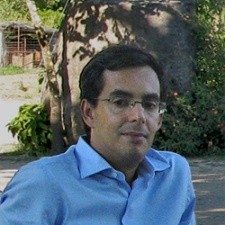Oliveira, M.A., Llop, E., Andrade, C.F., Branquinho, C., Goble, R, Queiroz, S., Freitas. M.C. & Pinho, P. (2020) Estimating the age and mechanism of boulder transport related with extreme waves using lichenometry.
Progress in Physical Geography-Earth and Environment,
44(6), 870-897. DOI:10.1177/0309133320927629 (IF2020 3,795; Q1 Geosciences, Multidisciplinary)
Tsunamis and storms cause considerable coastal flooding, numerous fatalities, destruction of structures, and erosion. The characterization of energy and frequency associated with each wave contribute to the risk assessment in coastal regions. Coastal boulder deposits represent a physical proof of extreme inundation and allow us to study the effects of marine floods further back in time than instrumental and historical records. Age estimation of these deposits is challenging due to lack of materials (such as sand, shells, corals, or organic matter) that retain information about the passage of time. Lichenometry, a simple age estimation method, which is cost-effective, quick to apply, and non-destructive, is here proposed as a solution. A lichen growth model for a calcium-tolerant lichen species was developed and used to estimate the age of a boulder deposit related to extreme marine inundation(s) in Portugal. Estimated ages indicate several very recent events (<700 years) for most of the boulders’ stabilization and agree with results obtained with optically stimulated luminescence of marine sands found beneath boulders. Frequent and recent boulder transport implies a storm-origin for this deposit. These conclusions contrast with other works describing identical deposits that are attributed to paleotsunamis. This study presents a methodology using lichenometry as a successful alternative for age estimation in rocky coastal settings. These results offer an alternative explanation for coastal boulder deposits found on the west coast of Portugal.



